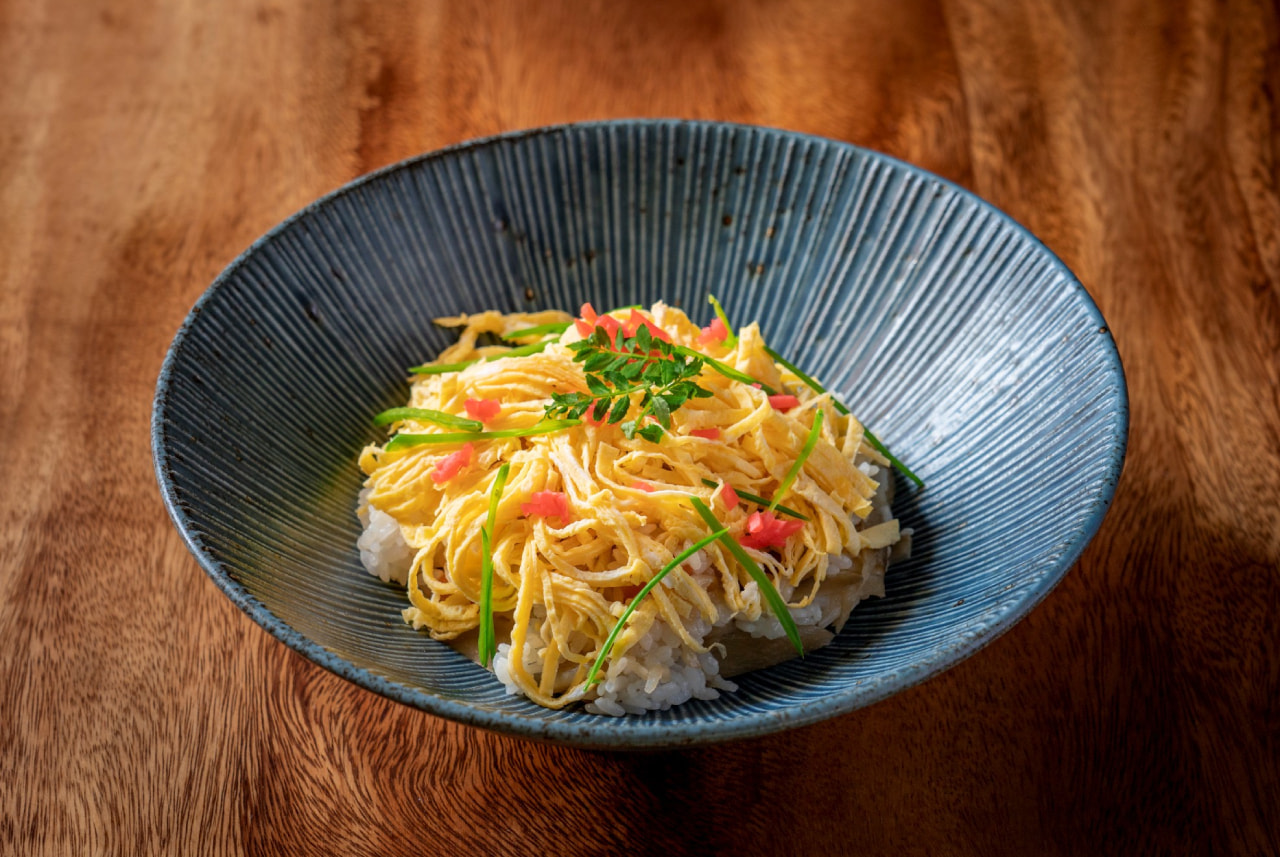Satsuma sumoji is a traditional dish from Kagoshima Prefecture, where chirashi sushi (scattered sushi) is referred to as “sumoji,” a term derived from the elegant court language once used by women in the imperial palace. Kagoshima’s sushi includes two main types: sake zushi and satsuma sumoji. While sakezushi was a luxurious dish enjoyed by feudal lords and upper-class samurai, made with generous amounts of seafood and mountain vegetables, satsuma sumoji was a more modest version prepared with familiar seasonal ingredients and cherished by the general public.
As a celebratory dish, it is typically made with around ten colorful ingredients and features local sake. This sake is produced by adding ash water to moromi (fermenting mash) during the brewing process, then pressing it. It has long been used as a substitute for mirin or as otoso, a traditional New Year’s drink. Due to Kagoshima’s warm climate, conventional sake brewing was historically unsuitable, leading to the development of this unique local sake. Because it is never heated, it retains high levels of amino acids, organic acids, and minerals, which are said to enhance the umami of dishes.
Sake zushi is fermented using this sake, whereas satsuma sumoji is made by dipping hands into the sake and mixing the rice and ingredients vigorously by hand. Traditionally eaten during spring events, it remains an essential dish for festive occasions such as Hinamatsuri (Girls’ Day), graduation ceremonies, and school entrance celebrations. With its vibrant presentation and the rich umami of local sake, satsuma sumoji continues to be a beloved seasonal dish in Kagoshima.


